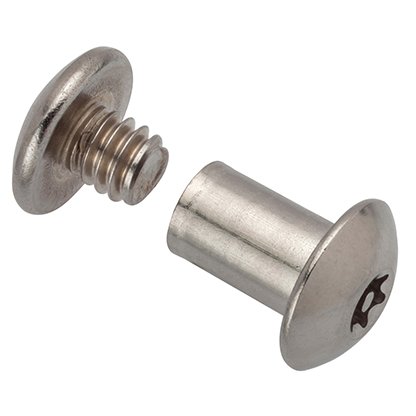An Introduction to Mating Fasteners
Simply stated, mating fasteners pair a female barrel with a male screw for the purpose of clamping material between the barrel and screw heads or bridging gaps between two components, such as passing through a hollow door.
These components, known by various names like Sex Bolts, Architectural Screws, Binding Screws, Binding Bolts, Binding Posts, Chicago Screws, Male and Female Bolts, Post and Screw, and Threaded Rivets, serve versatile purposes.
These components find utility in a diverse range of applications, including acrylic fastening, aquariums, automotive aftermarket, awnings, bathroom partitions, bleachers, boats, bulletproof glass panel joining, buses, cabinetry, construction, display fixtures, doors, exhibits, fence systems, furniture, gates, glass fastening, handrails, hinge pins, hurricane protection, HVAC, lockers, panic bars, playground equipment, plexiglass fastening, plumbing, architectural railings, RV manufacturing, seating, sheet metal fastening, shutters, signs, trains, and more.
Barrel screws are characterized by five key criteria:
Barrel Diameter - Designed to fit through predrilled holes, the barrel diameter should be slightly smaller than the hole diameter.
Barrel Length - Measured from beneath the head to the end of the barrel, or overall length for flat heads.
Thread Size - Specifies the size and depth of threads in the barrel.
Head Type and Drive - Most commonly featuring a "truss" style head, other prevalent drive styles include none, slotted, socket, and combo drive.
Material and Finish - Manufactured in various materials such as aluminum, brass, copper, 18-8 stainless steel, and Type 316 stainless steel, with options for different platings.
If you’d like more information or pricing on mating fasteners, contact Mudge Fasteners at (800) 634-0406.

